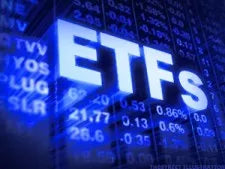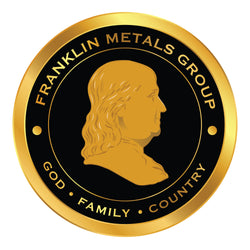
Understanding of the distinctions between acquiring physical metals and paper metal products like ETFs.
Gold & Silver ETFs
Many individuals lack an understanding of the distinctions between acquiring physical gold, silver, or other precious metals and investing in paper metal products like gold or silver-based ETFs. Here, we will examine the specific differences between possessing physical metals and holding shares of the gold-based ETF GLD or the silver-based ETF SLV.
What is GLD Exactly? GLD is the symbol for the SPDR Gold Shares exchange-traded fund (ETF), which commenced trading on November 18th, 2004. This gold-based ETF, currently holding around $33.12 billion in assets, is listed on the New York Stock Exchange Arca. It was designed to enable investors to participate in the gold market without the need for physical gold delivery or dealing with potential barriers such as custody or transaction costs.
In simpler terms, by acquiring GLD shares, one has the potential to profit from a rising gold price or incur losses with a falling gold price. GLD shares aim to closely mimic the gold price, excluding the fund's fees and expenses. Each GLD share represents fractional ownership in the trust, holding only gold bullion and occasionally cash. Besides broadening investor participation, GLD may serve as an investment vehicle in gold for various funds and pensions lacking the capacity to invest in physical bullion or its derivatives.
What is SLV Exactly? SLV is the symbol for the iShares Silver Trust ETF, which started trading in April 2006 and is listed on the New York Stock Exchange Arca. Designed to offer investors a cost-efficient way to access the silver market without dealing with delivery or storage concerns, SLV currently holds about $6.5 billion in net assets.
Similar to the gold ETF GLD, owning shares of SLV provides the potential for profit in a rising silver market, along with the risk of losses if silver prices decline. However, SLV does not precisely mirror silver's movements; instead, it aims to replicate the silver price minus fees and expenses. Each SLV share represents fractional beneficial ownership in the trust, which holds over 325 million ounces of silver.
Do GLD or SLV Shareholders Actually Own Gold or Silver? Possessing shares of GLD does not translate to ownership of physical gold. This distinction is crucial for potential investors to grasp. While GLD is based on gold and holds gold or cash as its sole assets, shareholders are not guaranteed to receive physical gold in exchange for their shares. Although shares can be exchanged for gold baskets, this process must be carried out through the fund's trustee, the Bank of New York Mellon.
However, the Bank of New York Mellon does not directly interact with the public. Shareholders aiming to take delivery of physical gold must be authorized participants and engage in 100,000 share blocks. Considering the current prices, a 100,000 share block equates to approximately $12,572,000, making this option financially out of reach for most investors. Similarly, SLV presents a comparable challenge. To redeem baskets of SLV shares, one must be an authorized participant and deal in 50,000 share blocks, which could be prohibitively large for many investors.
Where Is Gold GLD and Silver SLV Held? GLD stores its bullion in the form of 400-ounce London good delivery bars, kept in the HSBC USA, NA Bank vault in London. SLV holds its silver in the form of London good delivery bars stored in locations including England, New York, and other authorized places.
Counterparty Risk Because GLD is a paper asset backed by gold, it involves a degree of counterparty risk, which could encompass issues like accounting problems or liquidity challenges. SLV faces a similar potential for counterparty risk.
Owning shares of a gold-based ETF like GLD differs significantly from owning physical gold bullion that one can physically touch and feel. The complexities surrounding the delivery process of GLD bullion raise considerable concerns, especially in times of economic or geopolitical crises when exchanging shares of GLD for physical bullion may not be feasible.
Although the fund aims to mimic the gold price closely, there are associated fees. Comparing these fees with those tied to physical bullion ownership is crucial, and individuals must weigh the importance of taking custody of gold. It is essential to understand that owning physical gold is not equivalent to holding shares of a paper gold product or its derivative. Similar considerations apply to physical silver investments versus investments made in SLV.
While this list is not exhaustive, here are some potential pros and cons of GLD, SLV, or other gold or silver-based ETF products:
GLD/SLV Pros:
- Provides easy access to gold or silver markets.
- Easy to monitor day-to-day activity.
- Small minimum investment.
- GLD/SLV fees may be lower than costs associated with storage and protection of physical bullion.
GLD/SLV Cons:
- Ownership in GLD/SLV does not equate to owning physical gold or physical silver.
- GLD/SLV have certain potential counterparty risks.
- Taking delivery of physical gold or silver bullion is out of reach for most investors.
- Potential for liquidity issues.
- In an economic or geopolitical crisis, shares may not be exchangeable like physical metals.
Physical Gold & Silver Pros:
- You own the gold or silver; it is bought and paid for, and you can touch and feel it.
- Physical gold or silver ownership does not carry potential counterparty risks of paper gold or silver products.
- Gold and silver are recognized worldwide and can be exchanged anywhere.
- Physical gold and silver can potentially provide a hedge against economic turmoil or geopolitical risks.
Physical Gold & Silver Cons:
- Physical gold or silver may have more associated costs, such as storage and insurance fees.
- Dealer premiums and/or markups must be paid.
- Metal is usually sold at or below spot price.
While this list is not comprehensive, the fact remains that owning gold, silver, or other precious metals is fundamentally different from holding paper investments in these products. Gold, silver, and other precious metals have served as a store of value for thousands of years, and this perception may endure. The ease with which gold or silver can be exchanged globally, regardless of location or language, makes physical metals potentially more reassuring than paper metal products like GLD, SLV, or others, which may face recognition or exchange challenges in various parts of the world.
